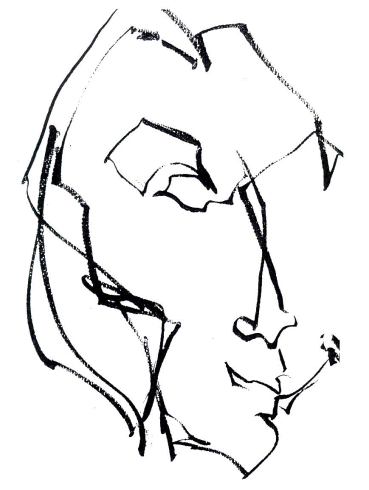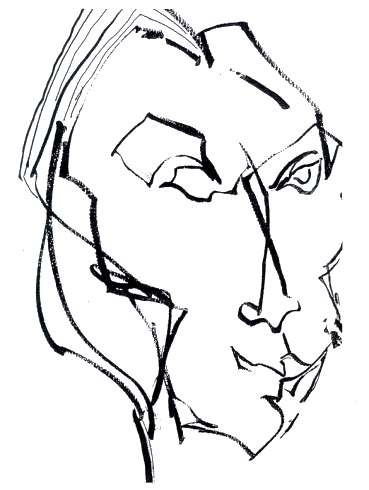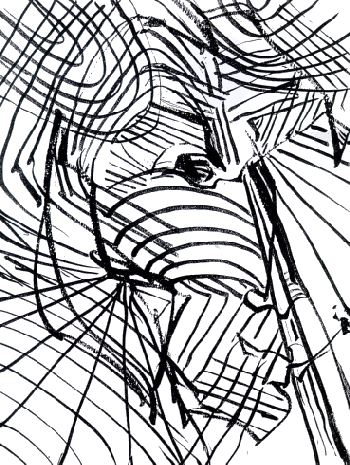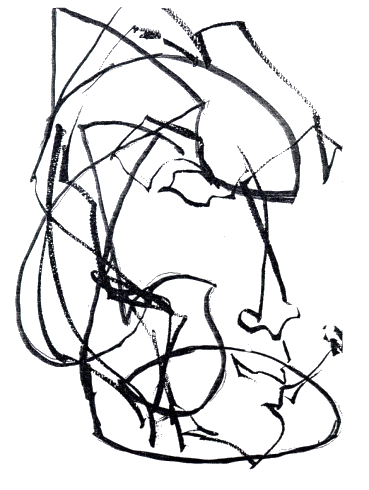
PORTRAIT
'These experiments are of great interest to those beginners whose previous experience of drawing has been limited to the description of an immediate visual object. To wean them to a study of the art of drawing itself and show the possibility of a line as line, a sheet of paper is arranged at a convenient angle to the artist and one position on it selected as a point in the subject(as a corner of the workshop, still-life, figure etc). From this point on the drawing is not again seen until the operation is completed - as the eye moves the hand moves with it in a continuous trace. To obtain complete coordination between hand and eye considerable skill will have to be developed, something like learning to shoot from the hip./---'

Fig.169. Portrait executed in looking at the face but not looking at the designing hand
nor at the sheet of paper.
'---/However well or ill-done a complex of
lines will result, dependent on the subject to some extent and also on the unconscious
gesture of the artist. Further developement of this drawing can be continued in one of two
ways. Referring back to this subject, corrections or modifications can be made, even
exploitation of the consequent double image./---'
It may be developed as figuration supplying something missing.

Fig.170. figure 169 with added eye.
Or else the drawing might be developed in a more external abstract way with a system of
geometrical curves placed on the portrait.

Fig.171. figure 169 pushed to abstraction.
This action lends a lightness to the solidity of figurative drawing.
'---/Otherwise considering the drawing
itself as the artefact it can be developed for itself alone by such methods as
counterpoint.---/'
It may be developed also by using counterpoint. The method is to stare obsessively at the
disjointed drawing of the head while not glancing at the paper or following nor planning
the hand's movement.

Fig.172. figure 169 with counterpoint.
back |